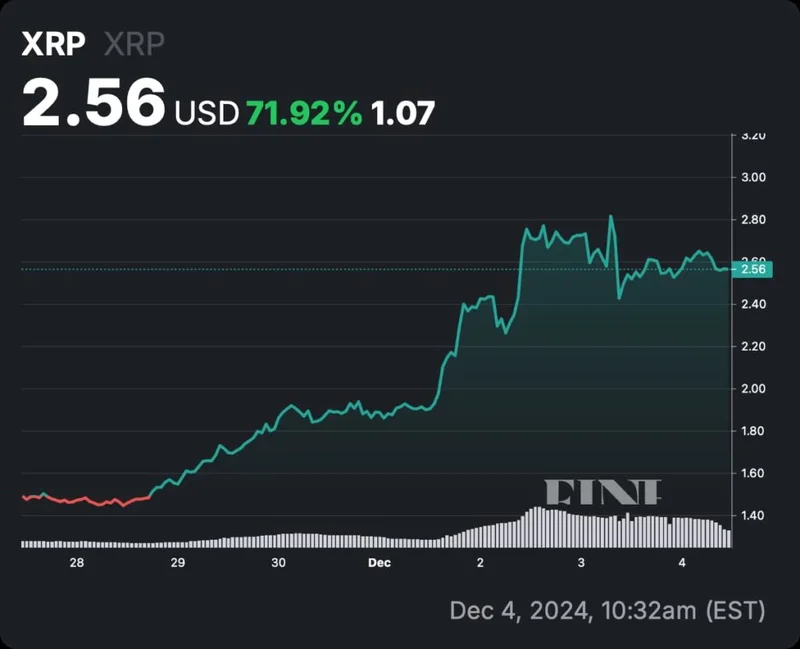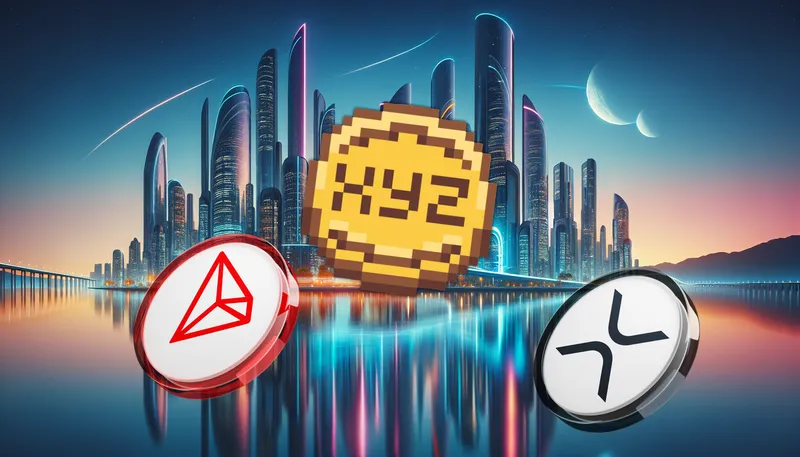Article Directory
For years, we’ve been watching the digital asset space with a kind of academic fascination, charting its chaotic rise and fall like astronomers observing a distant, volatile star. We've seen incredible promise shadowed by profound uncertainty. But every once in a while, a moment arrives that cuts through the noise. A signal that isn't just another flicker of market speculation, but the bright, steady light of a foundational shift.
October 5, 2025, is one of those moments. As I write this, the `XRP price` is holding its ground around the $3 mark. To an outsider, it’s just a number on a screen, another data point in a market known for its wild swings. But for those of us who have been following this story, that $3 isn't a price point; it's a flag planted on conquered territory. It’s the tangible result of a brutal, multi-year war being decisively won, and it signals the beginning of something entirely new.
For the longest time, the conversation around XRP was trapped in a regulatory fog. It was a technology with immense potential, shackled by a legal battle that cast a pall over its entire ecosystem. But now, with the SEC settlement of August 2025 firmly in the rearview mirror, that fog has lifted. And what we're seeing in the clear light of day is breathtaking. This isn’t just about a recovery. It’s about a renaissance.
The Unlocking of a Protocol
Let’s be clear about what the end of the SEC lawsuit truly represents. It was never just about Ripple, the company. It was about establishing a precedent for the entire American digital asset industry. The final judgment—confirming that programmatic sales of XRP on exchanges are not securities transactions—wasn't a victory; it was a liberation.
Think of it like this: for years, the XRP Ledger was a marvel of engineering, a high-speed rail network for value, sitting dormant because the regulatory authorities hadn't approved the blueprints for the stations. The technology was ready, capable of settling thousands of transactions in seconds for fractions of a penny, but the institutional capital, the big partnerships, the real-world applications—they were all stuck waiting on the platform. The August 2025 settlement was the moment the floodgates opened.
When I first read the final details of the settlement, I honestly just sat back in my chair, speechless. It was a complete capitulation by the regulators, a recognition that you cannot force old-world definitions onto a new-world paradigm. What does it mean when years of pent-up innovation, capital, and ambition are suddenly unleashed? We're finding that out right now.
This is the kind of breakthrough that reminds me why I got into this field in the first place. We are witnessing, in real-time, the transition of a digital asset from a speculative vehicle to a fundamental piece of global financial infrastructure. And it’s happening faster than anyone predicted.
The Architecture of a New Economy
With the legal questions answered, Ripple and its partners have started building. And they are not building small. The developments we’ve seen in the last few months aren’t just features; they are the foundational pillars of a new, tokenized economy.

Take the Ripple USD (RLUSD) stablecoin. Many people misunderstand this. They see it as Ripple competing with other stablecoins. But the real genius here is that it uses XRP as the bridge asset for settlement. This is a system designed to solve the volatility problem for institutions without sacrificing the speed and efficiency of the underlying ledger. It uses a dollar-pegged asset for the transaction itself—in simpler terms, it’s a stable digital dollar for businesses—while still relying on XRP’s speed for the back-end plumbing, which could drive demand for the native token.
Then you see the partnerships. It’s not just talk anymore. Japan’s SBI Holdings, a financial giant, is launching an institutional XRP lending service. They’re even working on a blockchain-based payment system for tourism, using NFTs as digital souvenirs. And you have to understand the scale of this—we're talking about billions in potential inflows from the most conservative financial institutions on the planet, which means the conversation is shifting from 'Is this real?' to 'How do we integrate this into everything?' and that changes the entire game.
This brings us to the elephant in the room: the spot XRP ETFs. With applications from BlackRock, Fidelity, and Franklin Templeton on the table, and Bloomberg analysts giving it a 95% chance of approval, we are on the precipice of another seismic event. The potential for $5-8 billion in new inflows isn’t just about the `XRP price today`; it’s about accessibility. It’s about making this technology a legitimate, recognized asset class available to everyone, from hedge funds to Main Street retirement accounts.
Of course, with this incredible power comes an equally incredible responsibility. As we build these new financial rails, we have a duty to ensure they are more equitable, transparent, and accessible than the archaic systems they are poised to replace. We can't just build a faster version of the old, walled-off financial world. We have to build a better one.
A New Contender on the World Stage
For a decade, the crypto narrative has been dominated by two titans: `Bitcoin` as digital gold and `Ethereum` as the world’s decentralized computer. Their price movements, from the soaring `bitcoin price` to the steady climb of the `ethereum price`, have dictated the rhythm of the entire market. But the data from October 2025 tells a new story.
While Bitcoin and Ethereum posted impressive year-over-year gains of around 97% and 85% respectively, XRP delivered a stunning 455%. This isn't a fluke. It's a market re-evaluation. Investors are no longer just looking for a store of value or a smart contract platform; they are looking for utility and regulatory clarity. XRP is now uniquely positioned to offer both.
This moment feels very much like the early days of the internet. First, you had the foundational protocols, the TCP/IP that made everything possible. That was Bitcoin. Then you had the first major platforms, like the early search engines, that organized the chaos. That was Ethereum. Now, we're seeing the emergence of highly specialized, high-performance applications built to solve specific, massive problems—like the multi-trillion dollar problem of cross-border payments. That is where XRP is carving out its kingdom.
It’s not about replacing Bitcoin or Ethereum. It’s about the maturation of an entire ecosystem where different assets play different, vital roles. The `XRP crypto price` isn't just a reflection of speculation anymore. It's a barometer of growing institutional confidence in a technology whose time has finally come. The question now isn’t if it will be integrated into global finance, but how deeply and how quickly.
The First Chapter is Written
For years, the story of XRP was one of "what if." What if the lawsuit ended? What if banks actually used it? What if it lived up to its promise? We are now past that. The legal war is over. The technology is proven. The institutional partners are not just knocking on the door; they are helping to build the house. The future we spent a decade theorizing about is no longer a distant vision. It's here, and we're living in it. The era of doubt is over. The era of building has begun.




